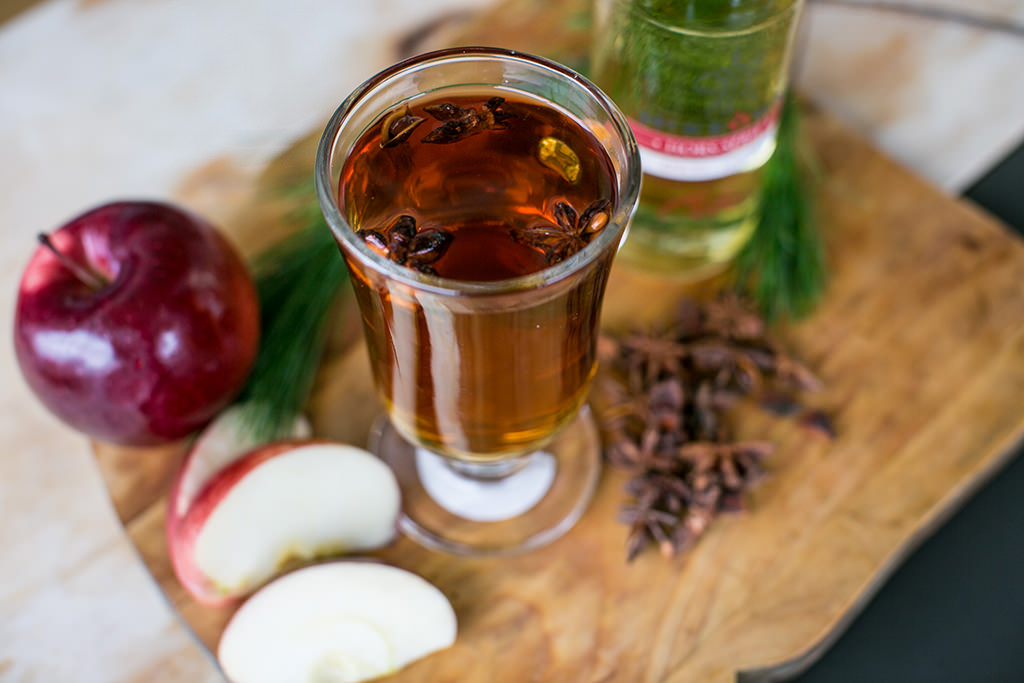8oz (224ml) hot Cider
1 Black tea bag
2oz (56ml) Rum
Pure vanilla extract
Pour rum, vanilla extract, and star anise in a mug. Heat Carolina Cider’s cider in a pot. When hot, steep black tea in hot apple cider.
Serve in a mug and enjoy!

8oz (224ml) hot Cider
1 Black tea bag
2oz (56ml) Rum
Pure vanilla extract
Pour rum, vanilla extract, and star anise in a mug. Heat Carolina Cider’s cider in a pot. When hot, steep black tea in hot apple cider.
Serve in a mug and enjoy!

This recipe is for a stronger sweet cider, it will ferment to about 7.5-9.0% alcohol and produce a sweet cider with a good taste that will develop well with about six months aging. At this strength, despite being sweetened the taste of the alcohol may be apparent and this might not appeal to all palates. If this is the case then halving the quantity of sugar or dextrose you add will remedy this.
Ingredients:
Method:
Sterilize all of your cider making equipment and anything that will come into contact with the cider.
Add the sugar or dextrose and the apple juice to the sterile fermenter, if you are using lactose to sweeten your cider mix it with 1/2 cup of water and add it to the fermenter then pitch the yeast. Seal the fermenter up and add the appropriate amount of boiling water to the airlock.
Fermentation should start to take place within a few hours but your cider might need up to 48 hours to really get going. The airlock will start bubbling at regular intervals. Once the airlock has stopped bubbling fermentation has ceased, this usually takes 2-4 weeks. Allow the cider to sit in the fermenter for a further 2 weeks to allow the sediment to settle to the bottom and then transfer the cider to another fermenter or container using a siphon, taking care not to disturb the sediment on the bottom of the fermenter. This process is referred to as racking and may need to be done two or three times before the cider is clear and you are happy with the sediment content.
Siphon the cider into clean and sterile bottles with a sterile siphon, adding a teaspoon of sugar per 750 ml (1.5 pints) of cider if carbonation is required before capping.
Allow the cider to age for at least 3 months in a dark place such as a cupboard at room temperature before sampling. The cider may need to be aged for over 6 months before it becomes palatable.
Notes:
If you are using freshly made juice that is not pasteurized or sterilized you should treat it with one Campden tablet per gallon (4 liters) of juice and allow it to stand for at least 24 hours prior to pitching the yeast regardless of what the recipe states. If you want to taste different ciders to get inspiration for your recipes, try Carolina Cider Company’s stores in Yamasee and all over South Carolina.